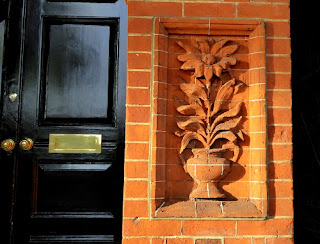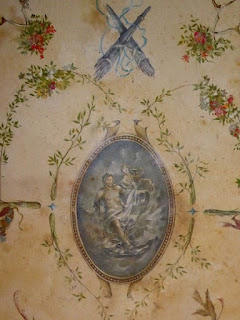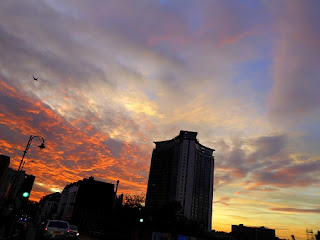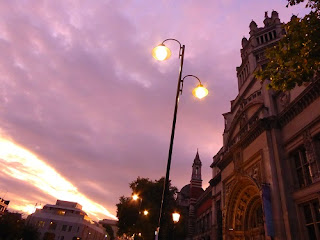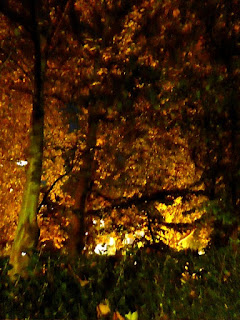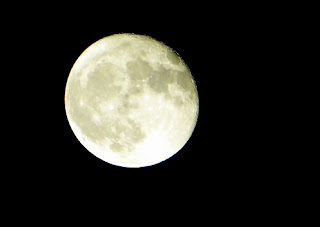I adored this Mensch. He and his beloved Jasia were always there for us, quietly and with discretion, during a difficult time. And I hope we returned the favour a little. Certainly I think only happy thoughts about Nick. Even though he suffered a lot in later years and was in and out of the Royal Free Hospital too much from 2004 onwards, he made art out of it, as I mentioned earlier on the blog, in a little masterpiece, Man + Doctor. Here's one more illustration which isn't actually in the book, expressing 'the feeling of liberation from hospital'.
In telling us that Nick had died, Jasia wrote eloquently (on 1 November, and I know she doesn't mind my reproducing this):
He died at 5.40 this morning on the 15th floor of the University College Hospital. It was his seventh week in hospital.
The view from his window was spectacular, the care excellent, but there was no prospect of a recovery.
For us, the last memory was a very happy one. Nick made a rare departure from home in August to come with Jasia and share a meal here with us and beloved mutual friends. He was frail but absolutely himself, and we laughed a lot. Here he is with Jasia and Maria Jesús.
We met through the humorously-named Cole Porter Choral Society, which he had set up with the assistance of Sylvia Libedinsky 20 years ago while they were working on cartooning and a cloth exhibition in Japan. At that time the other members were few, including Peter 'Joe Egg' Nichols and his wife, with Eva Hofmann at the piano.
Sylvia invited us to Liane Aukin's home - there's another dear one lost - and we joined as regulars, slightly putting out of joint the noses of those who preferred to croon rather than sing lustily (as one of them told me at the service). As with all groups, it wasn't without its frictions and defences, but what fun we always had rattling through selections from three books of songs by Porter, Gershwin, Berlin and others. Remembering the spontaneous singalong nature of the events, I suggested to our trusty pianist Kurt Ryz that we shouldn't rehearse the three for the service, and I told the assembled friends who packed the central chapel of Golders Green Crematorium how what we were about to offer was in the spirit of the meetings.
We should, I suppose, have sorted that we were going to repeat the initial verse of 'Chatanooga Choo-Choo' to embrace both Nick's variation and the original - it was chaotic beyond bounds when Kurt whizzed on to the next section without repeating. But 'You're the Tops', including Cole's naughty verse, rollicked before we hit another reef with 'Let's Face the Music and Dance', which wasn't in the books and turned out to proceed in a way that only J seemed to know (thank goodness).
Anyway, it wasn't about us but about Nick - and a lovelier remembrance couldn't be imagined. The MC was his good friend Dr John Besford, with whom I had a lively communication before the service and who brought along two jars of 'Dr Besford's Aubergine Pickle' from Mr Todiwala (spicy and intense) - one I was to make sure reached Alina Ibragimova, whose masterclass John had attended and whom he promised a sample.
John filled us in on essential details. I've extracted what he calls 'a synopsis of Nick's life in three short chapters provided by Jasia Reichardt.'
1.
Nicholas Wadley was born in 1935 in Elstree, Herts, the
youngest of four children. Went to Reed’s School, Cobham. After National Service (during which he worked as a Morse
code operator) he studied painting at the Croydon and Kingston Schools of Art and then art history at the Courtauld Institute of Art
under, among others, Anthony Blunt.
He has two children, Caroline and Chris, and six
grandchildren, a quorum of whom are here today.
2.
Nick's principal teaching work for 25 years was at Chelsea
School of Art, where he became head of department of Art History in 1970. He took
early retirement in 1985 to do research and concentrate on his own work,
writing and drawing.
Nick wrote some ten books dealing with art history,
including a book about Gauguin’s manuscript Noa
Noa (1985) and the standard
volume on Impressionist and Post-Impressionist Drawing (1991).
He wrote countless articles; reviews; catalogue introductions, gave countless lectures. He curated many exhibitions (Kurt Schwitters, London, 1981 ), Franciszka Themerson Drawings (Ålborg 1989), Gaberbocchus Press (Paris, 1996), 'The Secret Life of Clothes' (Fukuoka, Japan, 1998), UBU in UK (London, 2000), 'Franciszka Themerson, European Artist' (London 2013). He was the chosen illustrator of several authors including U.A. Fanthorpe, Lisa Jardine, John Ashbery and others. He also spent many years working on the Themerson Archive with Jasia, writing about Stefan Themerson and Franciszka Themerson's art and preparing her catalogue raisonné.
He wrote countless articles; reviews; catalogue introductions, gave countless lectures. He curated many exhibitions (Kurt Schwitters, London, 1981 ), Franciszka Themerson Drawings (Ålborg 1989), Gaberbocchus Press (Paris, 1996), 'The Secret Life of Clothes' (Fukuoka, Japan, 1998), UBU in UK (London, 2000), 'Franciszka Themerson, European Artist' (London 2013). He was the chosen illustrator of several authors including U.A. Fanthorpe, Lisa Jardine, John Ashbery and others. He also spent many years working on the Themerson Archive with Jasia, writing about Stefan Themerson and Franciszka Themerson's art and preparing her catalogue raisonné.
3.
John finished very eloquently:
Auden...wrote (regarding the Golden Rule): We are all here on earth to help others.
What on earth the others are here for I don’t know. But Nick did.
My loving and beautiful wife Sonja tells me that there is a
Jewish concept called tikkun olam which is expressed as acts of kindness performed ‘to repair the world’. Nick and Jasia together have been
practicing tikkun olam and inspiring
‘the others’ to do the same for
decades.
At night,
when thoughts walk naked,
unrecognised without their clothes,
they're neither words nor pictured quite.
By day,
they seem to go more one way
or the other.
Neither the Golders Green event nor refreshments afterwards at the Camden Arts Centre off the Finchley Road - which to my shame I've never visited before - offered much space for sadness; that came, for me, the day after. But it was undoubtedly a life well lived - and its effects will last, not least in the launch of another book very soon and with any luck another exhibition at the 12 Star Gallery.


































































